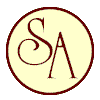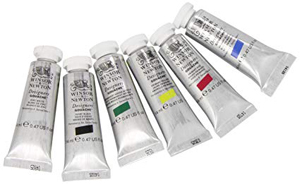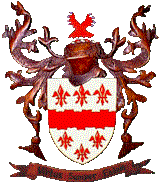| |
Who Uses Gouache and Why?
Click Here to Buy Designer Gouache with Online Discounts
Designers its ease of use and brilliance make it the most popular
designers colour, hence
the name, Designers Gouache. The matt finish makes for more accurate
reproduction at artwork stage.
Fine artists use it in conjunction with water colour or on its own. Its
brilliance and
opacity give it solidity, excellent for abstract work. Strong effects also
result from the
contrast of working on coloured backgrounds which are left partly exposed.
Airbrushing water based and great covering power make gouache popular
with airbrush
artists. It is the high pigmentation which makes the gouache opaque and
matt.
Calligraphy gouache is used by calligraphers because of its excellent
flow, opacity and permanence.
Marbling the high pigmentation and gum arabic base make it a common
choice with professional marblers.
What To Use It On
Best results are achieved on paper. For flat artwork, use HP water colour
paper or smooth
cartridge paper. Use 140lb or 220g to reduce cockling, or better still
stretch the paper first.
Cockling is likely to be worse if you leave some of the paper unpainted.
Pastel paper will
give you the strongest coloured background but these papers are not
generally as lightfast as
artists colours. Try tinted water colour paper instead or colouring
stretched paper yourself
with gouache first.
Permanence
Permanence in the main refers to lightfastness. Some of the most vivid
pinks and violets are
only moderately durable, more suitable for designers artwork than fine
artists who want
greater permanence. The latter should choose only the colours rated as
permanent. Do not
mistake any references to permanence on lower quality products if the
meaning is waterproof.
Making Gouache Waterproof
Gouache can be made water resistant by mixing with acrylic medium. If you
want to do this
because colour is dusting off, see below. The more medium you add, the
deeper the tone
will become and you will reduce the characteristic matt gouache finish.
Some gouache
colours can react, the pinks and violets may change colour on mixing with
the medium whist
other colours may produce lumpy or gelatinous mixtures. Both these effects
occur at the
point of mixing on the palette.
Preventing Gouache From Cracking Or Dusting Off
The high pigmentation of gouache leaves the minimum room for binder. If
painting in
multiple layers the binder may be absorbed by underlayers, resulting in
cracking. Dusting off
can occur if the colour is diluted with too much water, leaving only
pigment on the paper.
This is common when airbrushing. In both cases you need gum arabic. With
multiple layers,
add gum arabic to the colour, keep it to a minimum or you will get
transparency and gloss, but
the amount needed will vary from colour to colour. For airbrushing, dilute
all the colours
with a mixture of gum arabic and water.
Adding Texture
Gouache is likely to crack if used in thick films straight from the tube.
Textured brushwork
can be achieved with gouache by using Aquapasto medium. Don €™t use too
much or you will
loose mattness and opacity. Added texture is possible by using acrylic
texture gels, but read
the section above on waterproofing as that information applies here too.
Varnishing
Gouache paintings are best left unvarnished because the varnish
drastically affects the depth,
darkness and finish of the work. It would not be removable in the future
either. If you want
to varnish because of dusting off, use gum arabic in the future instead.
For protection, frame
the work behind glass.
Stretching Paper
Stretching paper maintains a flat sheet when using large quantities of
water. All weights of
paper will benefit from stretching, as once stretched, you are free to use
as much water as
you wish. Stretching works by soaking the paper to expand the fibres and
taping it flat to dry
taut. More water will not then be able to cockle the paper.
The important tips are:
Soak the paper completely - 90lb for 3 mins, 140lb for 8 mins, 300lb for
20 mins.
Drain the paper of excess water
If using a manmade fibre board, seal it with dilute French polish first.
Use brown gum strip (not masking tape) to tape edges along their
complete length.
Keep the board flat to dry. |
|
| |
Application Of Gouache
Being used to water colour, when I use gouache I never seem to get the
colour flat. Is it the
brushes I am using? What am I doing wrong?
Using too much water will produce streaky washes as would too little
water. The colour should be
diluted to a creamy flowing consistency before applying to the paper. A
hot pressed or smooth
paper may also help the overall effect in comparison to rougher surfaces.
You must use a soft hair
brush, preferably sable. Choosing colours rated 0 for opacity on the
colour chart will give the flattest
washes. Winsor & Newton gouache gives considerably flatter washes than
many other brands.
Body Colour
People sometimes call white gouache body colour but I have also heard the
term applied to
colours. Are these the same as gouache or are they different? If so, how
are they supposed
to be used?
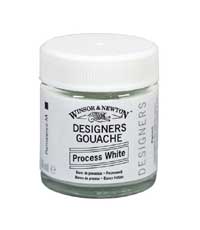
Body colour is the use of opaque colours for highlights or dense flat
areas and is a technique which
has been used in water colour for centuries. Designers Gouache was
introduced in 1937 and prior
to this the only method of achieving opacity was to use white, on its own
or to make tints of the
water colours. Body colour therefore refers to either tubes of gouache or
the finished effect of
opacity on a picture whether white or coloured.
Framing Gouache Paintings
I have painted and sold a number of flower paintings using Winsor & Newton
Designers
Gouache, framing them in ornate frames with a linen inset. However, I have
now been told
that gouache works should not be directly under glass but require a card
mount between
the glass and the painting. The frames are much more attractive than card
mounts but
should I stop using them? Related to this, about 10 years ago I painted a
picture of deep
purple buddleia, which has been hanging in a north facing room with no
direct sunlight. I
used Permanent White as a base, then Light Purple and Parma Violet. I have
noticed that the
dark shading is beginning to fade and wondered if this is because of the
frame?
Gouache and all works on paper should not be placed in a frame directly
onto the glass, as this
does not allow for any circulation within the frame and condensation can
build up, resulting in mold
growth. A mount between the paper and glass allows just enough circulation
to prevent this.
Provided your linen inset is between the paper and the glass, it will
perform exactly the same job as
a card mount. The frame will not have any effect on the fading of the
painting you describe. The
fading of a colour is due to the pigment and the methods which are used in
painting. The
permanence of a colour is described by Winsor & Newton using the system of
AA, A, B and C. AA being Extremely Permanent and C being Fugitive.
Fugitive means transient, some fugitive colours
may fade within months. For permanent paintings it is recommended that
only AA and A colours are
used as these are not expected to fade. Light Purple has a B rating and
Parma Violet a C rating,
fading over a 10 year period would not be unexpected with these colours.
Gouache Cracking
I have been using gouache for posters and design work for many years.
Recently, on nearly
completing a picture with a black cat I found to my horror the Lamp Black
had cracked.
Fortunately, as the piece was on board I was able to remove the layer and
repeat it without
cracking. Do you think there is something missing from the Lamp Black, I
have never had
this problem before, I usually use Jet Black but the shop was out of
stock.
Winsor & Newton gouache derives its opacity and matt finish from the
exceedingly high level of
pigment used in the formulation. With so much pigment this means the
proportion of binder (gum
arabic) is lower than it would be in water colour. Cracking can usually be
attributed to one of two
reasons when using gouache. Firstly if not enough water is used to dilute
the colour, the thicker film
may crack as the paint dries on the paper. The amount of water needed will
differ with each colour.
Secondly, if painting in layers, the subsequent ones may show cracking if
the underlayer absorbs
binder from the wet colour. From your description, you could have suffered
from either problem. I am
sure there is nothing wrong with the Lamp Black, as this could have
happened with any colour in
the circumstances described. One final note for gouache painters, although
not enough water can
cause cracking using too much will over thin the colour leaving it dusty
on the surface. You will need
to learn what the right amount is with different colours as you use them.
As a guide, if you do not use
enough water, the colour will lack flow, if you use too much the colour
will become more
transparent and streaky.
Permanence Of Gouache
As I sometimes sell my gouache illustrations, I need to be sure the
colours will not fade. Is
permanence affected by dilution? I tend to put my colours on quite thin.
Although thin washes will be more sensitive to light than thicker ones,
gouache colours tend to be
either lightfast or fugitive, in which case the amount of dilution doesn't really matter. Use only
colours rated AA or A for permanence. This cuts out all the violets in
gouache, for this area use
Artists Water Colour instead.
Preventing Lifting Of Gouache Colours
I have been really enjoying using gouache with water colour and also mixed
with pastels and
acrylics. If I spend a long time on a picture, especially when mixing the
paints on the same
work, I find the gouache layers lift. I do not want to mix them with
acrylic colours because
then they are not the same.
Water resistance can be achieved by adding small amounts of Acrylic Matt
Medium. Experiment
with a few colours so you can find the lowest level of medium required.
The less acrylic in the
gouache, the more like gouache it will remain. Care should be taken
however as some colours can
react. The pinks and violets in Designers Gouache can have a tendency to
change colour on
combination with acrylic. Some other Designers colours may be sensitive
to alkali and produce
gelatinous or lumpy mixtures. This reaction will be self evident whilst
mixing on the palette. The
addition of the medium will also deepen the tones and reduce the matt
finish of the gouache colour.
Priming For Gouache
I have been painting with gouache onto hardboard, which I have primed with
a household
vinyl emulsion. I have been told that an artists
Acrylic Gesso Primer is
more appropriate
but I cannot see the problem with what I am using at the moment.
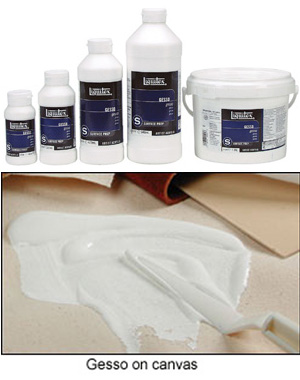
In years past the relationship between household paints and artists
colours was much closer, as the
raw materials used by both industries were in common. As new materials
have been developed in
their thousands the products for these two sectors have moved further and
further apart. Nowadays
the type and quality of the raw materials as well as the purposes and
manner in which they are
used has resulted in household paints performing a totally different job
to the requirements of an
artist. As a result of this, a household vinyl emulsion could not be
expected to have the correct
degree of absorbency required for an artists primer. Gouache is
particularly susceptible to
absorbent grounds as there is a low level of binder in order to achieve
mattness and opacity. An
over absorbent ground can lead to an underbound paint film and the pigment
being insufficiently
attached to the support. Household paint film is neither formulated to
remain stable in the long
term and can be expected to embrittle, discolour, crack and peel over a
number of years. The resin
and formulation used in Winsor & Newton Acrylic Gesso Primer ensure the
correct absorbency and
film stability expected for permanent works of art.
Smooth Finishes With Gouache
Some gouache colours seem to go on more smoothly than others. Is this to
do with the
pigments they contain or do different makes vary in consistency?
Different makes vary a lot in consistency, the cheaper makes particularly
suffer from a lack of flow
and opacity. The pigments themselves will however have an affect. Within
Winsor & Newton,
colours rated T for transparency on the colour chart will not make as
smooth a wash as those rated
opaque.
Thickening Gouache
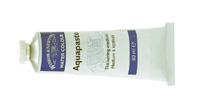
Is there a medium you can mix with gouache to make it thicker?
Occasionally I like a slight impasto would I be better off using acrylic?
Aquapasto can be mixed with gouache to allow it to be used in thicker
films. This is relative of
course and even thick gouache cannot really be classed as impasto. Acrylic
straight from the tube
will be thicker than gouache and has the advantage of more than a dozen
thickening and texturing
mediums to further manipulate it.
Whites In The Gouache Range
I am told that there are various whites available in gouache, but so far I
have managed quite
well with only one. What are these other whites and what are they for?
Permanent White is the whitest most opaque white but is not recommended
for colour mixing. Zinc
White produces the cleanest, most lightfast tints. And finally, Process
White is for photographic retouching, where it will reproduce its true
value.
|
|
